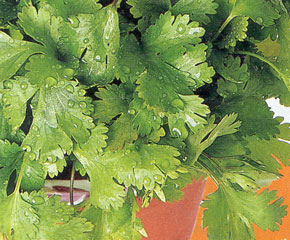Coriander, also known as cilantro and most commonly sold as phakchi in Japan. It was brought to Japan more than 700 years ago, but many Japanese hate it because of its pungent flavour and smell.
Now, a growing number of coriander fans are spreading their love for the herb by planting their own coriander, swapping coriander notes on the web, and congregating at Tokyo’s first coriander restaurant,
“Paxi House Tokyo”, which opened late last year, was named after the Thai name for coriander – phakchi – and “pax”, Latin for “peace”.
“Coriander is an herb loved by people who love peace,” the restaurant’s owner and founder Kyo Satani said.
At Paxi House, every single dish contains coriander, from appetizers to desserts such as coriander ice cream and Pacookie, a coriander-flavored cookie.
“I wanted to come here as soon as I heard that Paxi House Tokyo was opened,” said 33-year-old Chie Tazaki, enjoying a plate of green spicy rice with coriander.
Coriander is believed to have been first brought to Japan in the 13th century, and has been recorded as a condiment for sushi. However, it was not commonly used until the mid-1990s, when Southeast Asian cuisine boomed in Japan.
“I hated coriander before but I became keen,” said Kuremi Yamada, a 26-year-old painter who currently holds an exhibition at the restaurant. Her favourite dish is called Yampaku, a sizzling plate of grilled lamb on a bed of coriander.
“Coriander is a key spice in curries. Even people who hate coriander enjoy eating curries,” Satani, the owner, said.
Satani himself only recently became a coriander fan. In August 2005, he travelled to Cambodia, where he had his first encounter with coriander and also met Hiroshi Yamashita, who later became a chef at Paxi House Tokyo.
Satani started an Internet community for coriander lovers as soon as he came back from his trip and the community now has about 560 members.
The restaurant buys about 10 kilos of coriander weekly from a farm in Chiba prefecture but coriander can grow wild, and more and more people grow it at home.

